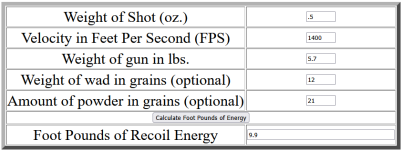Patrick Ward
New member
Has anyone shot a .410 extensively for ducks? I broke my clavicle, all the ribs on my right side, and broke off the spinal processes in a serious accident. If I am going to shoot at all this year I need to find a way to minimize the punishment on my body.
Given my injuries, I expect to be given the go-ahead to resume weight-bearing activities sometime in December. Unfortunately, that means that my shoulder will still probably be unable to handle heavier recoil until February or so.
My normal gun is a 20ga Browning Silver. My .410 is a Tristar Viper G2. The .410 has been used as the backup gun the last few years, which means I have barely shot it. I have had success shooting scoters with it, but those shots are very close. In that case, I found that I was able to consistently kill scoters over the decoys shooting bismuth. I was able to cartwheel scoters at distance using tss. I hunt in California, so open spaces are the norm.
My options for .410 shells are steel 6s, TSS 9s, and Bismuth 4s and 6s.
So, has anyone hunted a lot with a .410?
What is the recoil like?
Will I destroy my shoulder again?
For regular ducks how did it do?
Did you develop a strong preference for any specific shell?
Given my injuries, I expect to be given the go-ahead to resume weight-bearing activities sometime in December. Unfortunately, that means that my shoulder will still probably be unable to handle heavier recoil until February or so.
My normal gun is a 20ga Browning Silver. My .410 is a Tristar Viper G2. The .410 has been used as the backup gun the last few years, which means I have barely shot it. I have had success shooting scoters with it, but those shots are very close. In that case, I found that I was able to consistently kill scoters over the decoys shooting bismuth. I was able to cartwheel scoters at distance using tss. I hunt in California, so open spaces are the norm.
My options for .410 shells are steel 6s, TSS 9s, and Bismuth 4s and 6s.
So, has anyone hunted a lot with a .410?
What is the recoil like?
Will I destroy my shoulder again?
For regular ducks how did it do?
Did you develop a strong preference for any specific shell?



